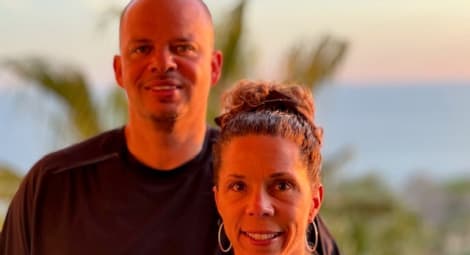Stroke has no age limits

By Desiree West-McCarty
When the doctor first told me I had a stroke, I thought she was mistaken. After all, I’m in my mid-30s, eat a healthy diet, exercise regularly and don’t smoke. But it turns out that one-third of strokes occur in people under the age of 65.
I’ve since learned that children, even infants, can get a stroke. In fact, stroke is one of the top 10 causes of death in children, according to the American Stroke Association. Children often have another medical condition that leads to the stroke, such as sickle cell disease, autoimmune disorders or congenital heart disease.
You may need to be a certain age to drive a car or enlist in the military, but stroke has no age limits.
In my case the stroke was caused by a brain disease, neurosarcoidoisis, which I was diagnosed with in August 2017. Sarcoidosis is a rare inflammatory disease of unknown origin that can affect any organ in the body. I have sarcoidosis in my central nervous system, which — when I have a flare-up — affects my memory, causes severe headaches and limits my ability to use one side of my body.
When I was diagnosed with neurosarcoidosis, the doctors also discovered I have sarcoidosis-caused small vessel vasculitis. What that means: when I had the stroke, the blood vessels in my brain got so inflamed they temporarily blocked blood flow to my brain.
During the stroke, I had numbness and tingling in my face and right hand and arm. Thinking I was experiencing a flare-up of my neurosarcoidosis, my husband mimicked the neurology tests he had seen the doctors run on me so many times. But when he tried to have me walk with him, I couldn’t. That’s when he called 911.
I had no idea that stroke was something that could result from my brain disease. I knew the warning signs of stroke, which even crossed my mind when I had tingling in my face and weakness in my body, but I didn’t know strokes can occur in people in their mid-30s who have spectacular cholesterol (the nurse in the hospital told me it was one of the best cholesterol levels she had ever seen), even if they had a brain disease.
Following the stroke, I was admitted to inpatient rehab at MultiCare Good Samaritan Hospital. Most people think of rehab as a place you go to for drug and alcohol addiction, but this one is for physical and cognitive rehabilitation. Some patients, like me, were recovering from stroke, and others had physical and cognitive limitations due to brain surgery or other neurological issues.
The stroke left me with severe weakness in my right hand, arm and leg, so the therapists worked with me to relearn how to walk and do activities like dress myself, shower and do my hair.
When I first arrived in inpatient rehab, I needed two staff members to assist me with going to the bathroom and I was in a wheelchair most of the time. By the time I was discharged, I was going to the bathroom unassisted and walking without a wheelchair or device at home. They do amazing things in rehab!
It’s been more than a month since I was discharged from inpatient rehab. I continue receiving outpatient occupational therapy and physical therapy and likely will for several more months.
In the photo below, I’m making peanut butter cookies in occupational rehab.
Even though stroke has no age limits, one good thing about having a stroke at my age is that my doctors expect my recovery to be quicker.
Now that I’ve had a stroke, my chances of having another are greater. Some causes of stroke are not within my ability to control, like family history or the fact that I’ve already had a stroke. But some, like eating a healthy diet and staying physically active, are within my control, so I’m going to take charge and be vigilant about making healthy stroke prevention lifestyle choices.
More information about stroke
According to the National Stroke Association, there was a spike of 44 percent in the number of Americans under the age of 45 hospitalized due to stroke over the last decade.
A stroke happens every 40 seconds. Act “FAST” to reduce recovery time. FAST stands for face, arms, speech, time and is an easy way to remember the signs of stroke. Read more here.
Learn more about MultiCare’s award-winning stroke program, including the South Sound’s highest level of care, at multicare.org/stroke.



